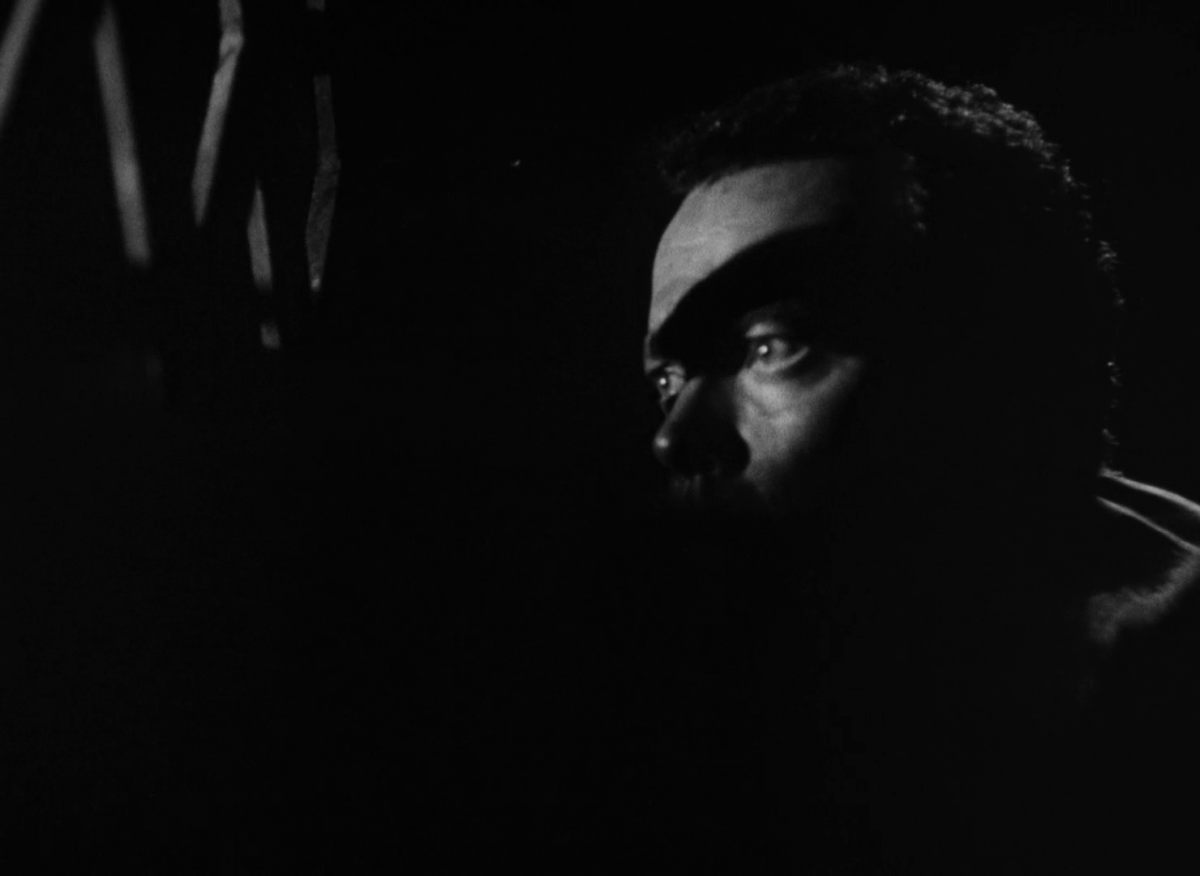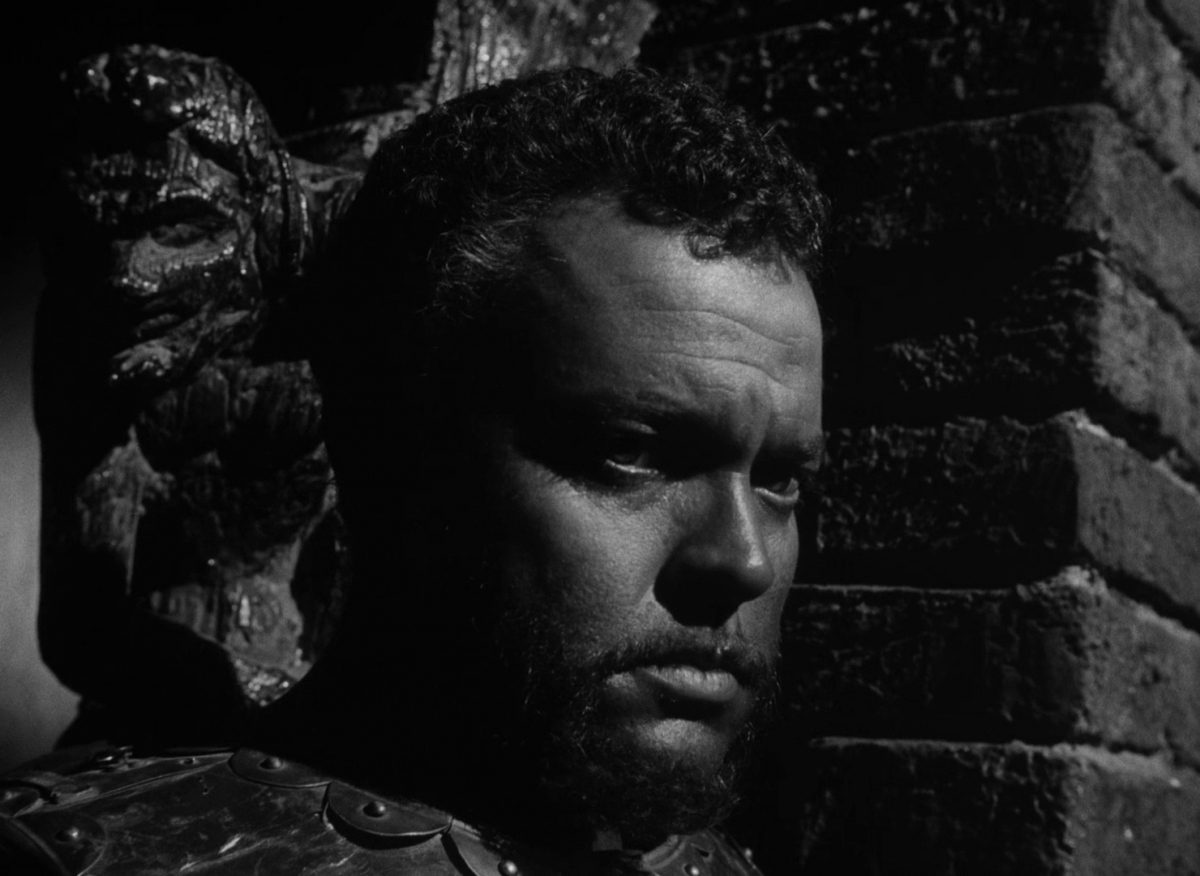The Blind Filmmaker
The One-Sided Genius of Orson Welles

Orson Welles, Othello. The film was in production for four years: from 1949 to 1952. Under these stars, Welles begins a second, exclusively European career as a filmmaker. An exile (like Chaplin, Von Stroheim, Fuller). Welles gets lost in the fragmented European production system. His natural megalomania is greatly fostered here, but rarely satisfied. No capitalist father figure keeps him in line any more. For him, Europe is like a mirage: boundless promises that systematically evaporate. He turns this misunderstanding into a lifestyle and aesthetic. Welles is pre-eminently a director of images. He has no patience for scenic continuity and spatial naturalness. Every shot obsessively bears his signature: exuberant mannerism. In the 1950s, bookish film grammars were written on the basis of his films, with homages to bird’s-eye-views and worm’s-eye-views, reflections on the plasticity of the film image and descriptions of image transitions that should shimmer with elliptical expressiveness. But these textbook examples of the cinematic were challenged soon after by the Nouvelle Vague. And the realism of Renoir, Visconti and Rossellini had already definitively closed the box of tricks of Big Cinema several years earlier. The new message was that cinema does not construct – as the artistically ambitious feature film pretended to do – but registers.
One could say that Welles continued until his last films to pursue an outdated and misguided film ideal, which had triumphed in silent film but disappeared after that. As so often, his relentless appetite for experimentation was playing tricks on him: nothing ages as quickly as innovation; nothing is as tiring as the effort above all not to be natural.
And this is precisely where Welles becomes interesting: the stubborn tinkerer, the perfectionist amateur, the megalomania without resources – financial, production, intellectual and self-critical resources. Welles does not belong to mainstream cinema or to the classic patrimony but to the exotic periphery. Such films often fill you with reluctance: they are so ill-mannered. In a way, they disdain the public. Not to lecture but to overwhelm; not to seduce but to silence.
Dead as a Doornail
The most disappointing thing about Welles – which is confirmed by Othello – is the lack of sensuality. No morbid or sentimental emotion whatsoever can be read from the screen. Jealousy and lust are cloaked in compositions, lighting and scenery; they are never made visible in the body. There is more eroticism in one shot by Straub or Bresson (surely not the most obvious ones in the field) than in an entire Welles film! This seems due to his inability to let an image be what it is, to quietly watch what happens. No, he wants to construct everything, to place every detail, every nuance into that image consciously and willingly. There is no faster way to drain an image of its soul! Of course, his images do not surprise us: this formalist constructor pondered over them until they were dead as a doornail.
Every shot eventually acquires the quality of a still-life, a polished natural shape. Perhaps that is what Welles is: not a dramatic but a cosmological creator; not a manipulator of histories but of matter and its forms. He shares these qualities with the very greatest: Eisenstein, Gance, Murnau, Von Sternberg. It’s just that the film era in which he worked was no longer suited to that. Cinema had long been cured of its astonishment at itself, at the capacity of its childlike magic for creating grandiose syntheses. Welles is a caricature of that tradition, an alibi for belated and provincial film purists, a wet dream for creative adolescents who recognise themselves in his unerotic world of purely masculine, narcissistic ambitions.
Welles is blind – because he is visionary and superhuman. His one-sidedness is not only exasperating but also touching. His narcissism makes him an alien and excessive creature who sent the film into orbits that seem vital today. His sterile attention to the image is more precious now than the indifference with which people handle the image today, on television and in film. Today, the imposing allure with which he builds emotions into his compositions is no longer nourished as ambition. One leaves that to sound now. The heroic tinkering of his filmmaking resulted in a crumbled structure. That explains how he wanted to compress his entire project in each shot. If you take Othello apart, you are left with at least twenty or thirty film fragments that keep on fascinating the eye as masterpieces of maybe a few seconds or one minute. That too is film: the art of portraying a wave, a sail, a banner, a mass of helmeted soldiers, a castle or a portico as if you were seeing it for the very first time. We will have to learn to live with Welles’s increasingly obvious limitations, because the qualities he dragged to us from the past of the image are indispensable.

Images from Othello (Orson Welles, 1951)
This text originally appeared in Kunst & Cultuur, June 1993.
This translation was published by courtesy of Reinhilde Weyns and Bart Meuleman.
With the support of LUCA School of Arts, LUCA.breakoutproject.

